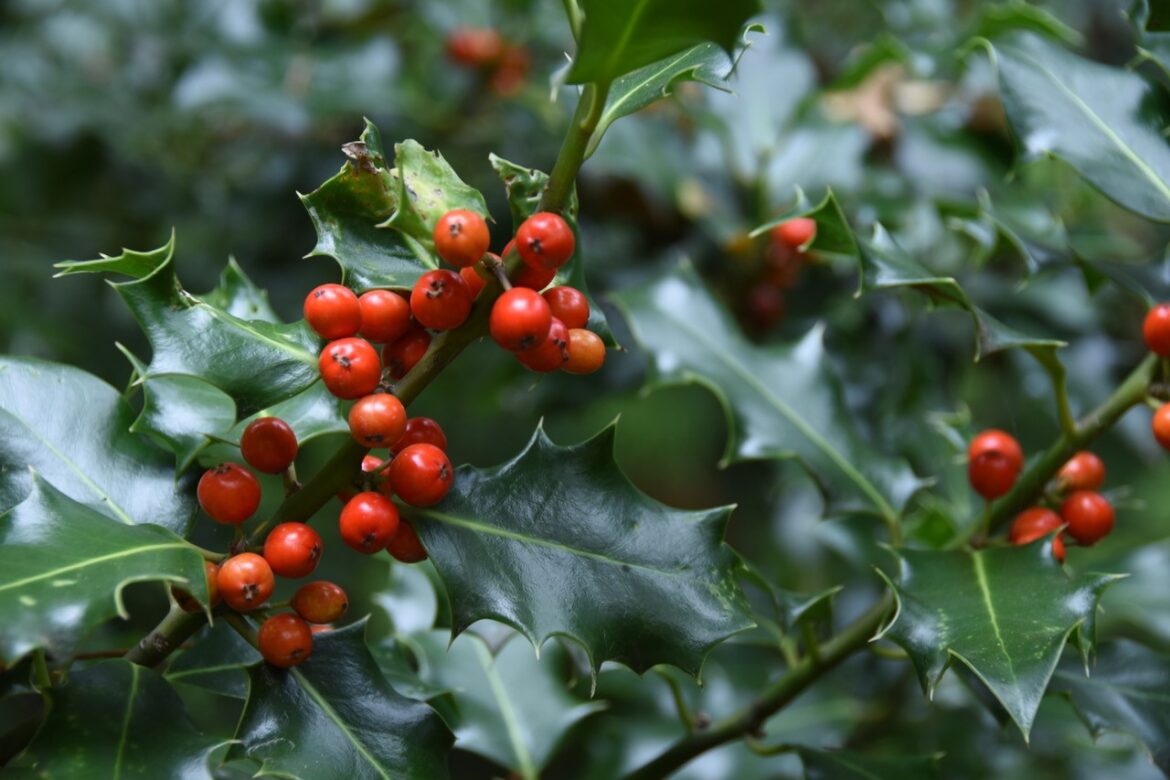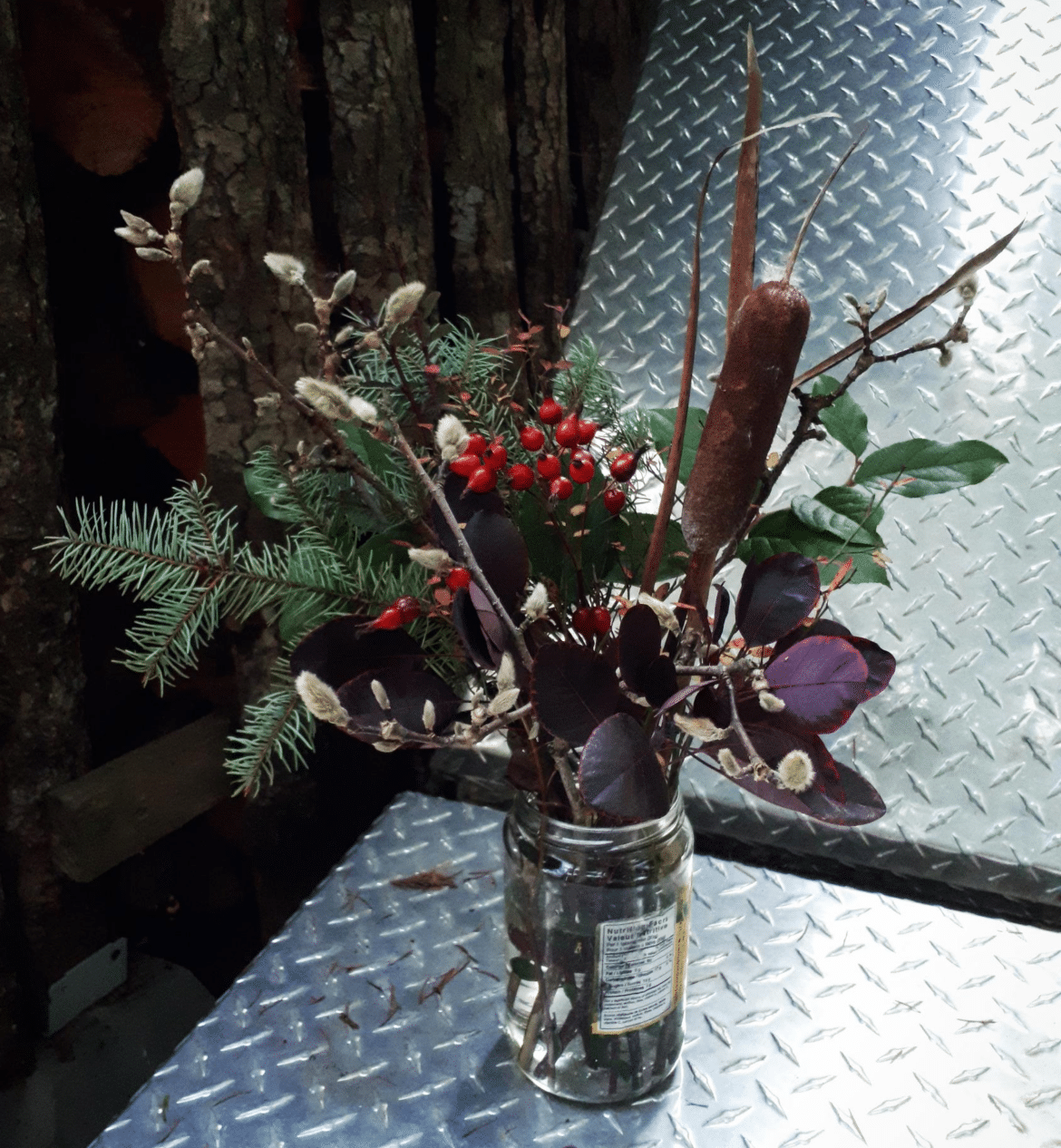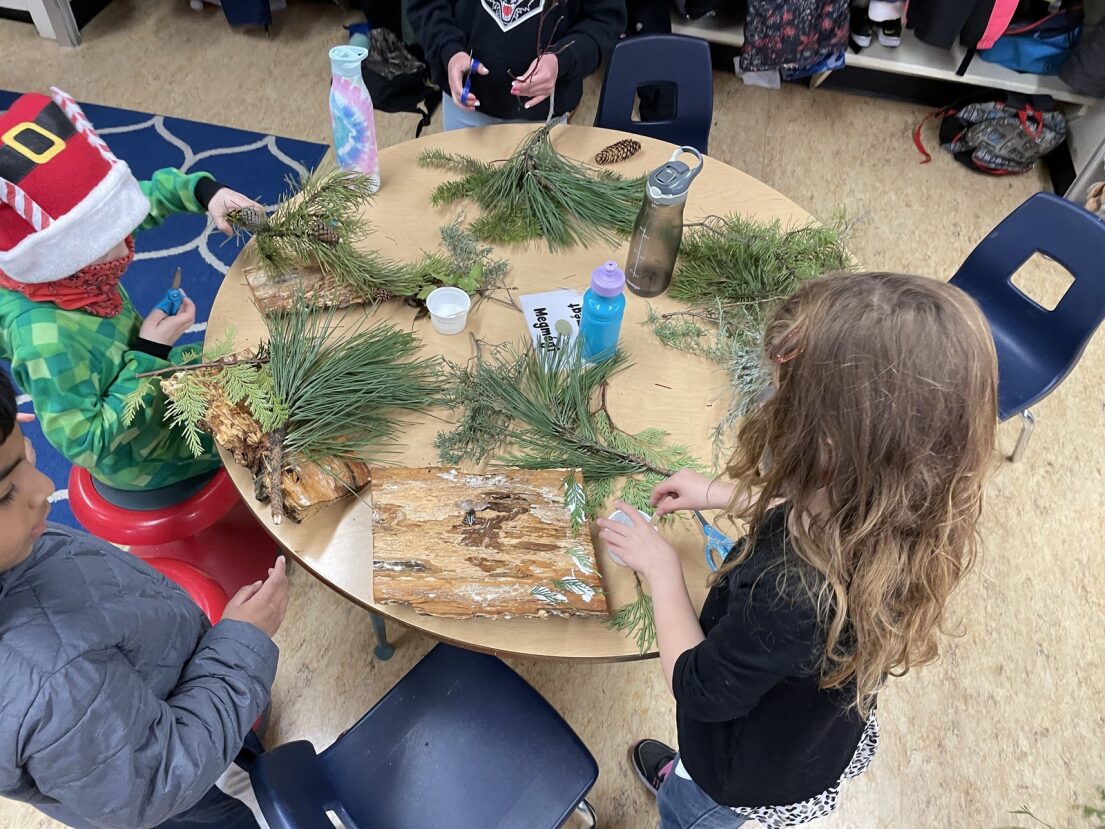By Lisa Houle | December 6, 2023
There’s something comforting about winter. Temperatures outside get cooler, clothing is warmer, and homes adorned with seasonal decorations feel cozier. This year, if you opt to create organic décor using plants and other items found in nature, now is a great time to consider the materials you’re choosing before you start crafting.
Because some plants, though pretty, can cause great harm to our sensitive ecosystems.
One of the first decorations visitors notice is the welcome wreath hanging from the front door. A quick online search reveals two plants showing up in material lists for wreaths on multiple websites, both of which are notorious invasive species: English holly (Ilex aquifolium) and English ivy (Hedera helix).

It’s easy to recognize English holly with its glossy, spiny leaves and red, yellow, or orange berries that appear in winter. Originating from Europe, its greenery has adorned homes as far back as Roman times. English holly was intentionally introduced to North America but, in BC, it’s invasive. It can grow in shade or sun, crowds out native plants, and monopolizes groundwater. Its berries are poisonous to humans but palatable to birds who easily spread seeds to new places.

English ivy is an evergreen vine found growing as dense groundcover or climbing up trees. Its waxy, leathery leaves are star-shaped with 3-5 points, and come in a range of colours including dark green, silver-green, yellow, and white. English ivy was also intentionally introduced to North America from Europe. In BC this plant has been creeping its way throughout the southwestern part of the province, Vancouver Island, the Gulf Islands and the Lower mainland, smothering native trees and shrubs in its path. English ivy can also spread from the seeds of its black shiny fruit which emerge in fall.

Smoke bush, created by Lauren Bosch, ISCBC’s Manager of Engagement.
“Taking pieces of these invasive plants to create decorations is one of the ways we help continue their spread. English ivy continues to grow year-round and one of the easiest plants to propagate, so pieces dropped on the ground could turn into a new outcrop. English holly berries contain many seeds which can turn into new plants. Once an invasive plant spreads and establishes in a new area, it is difficult to eradicate,” said Dave Ralph, ISCBC’s Senior Manager of Operations. “Both plants, originally brought over for landscaping purposes, can escape from the urban setting and impact agriculture and forestry. It’s time to think beyond the ornamental value of a plant and consider the environmental consequences.”
“If you do end up with invasive plants in your holiday wreaths and decorations, be sure to dispose of them properly. Do not compost these plants or leave them on the ground. Using a separate garbage bag from your regular waste, be sure to bag up all the pieces so nothing is left behind. Take them to your local landfill and inform staff that you have invasives to drop off,” said Dave.
As an alternative to English holly, consider using a species native to BC such as Oregon grape (Berberis nervosa or B. aquifolium), which has similarly spikey evergreen leaves. Choose Red elderberry’s (Sambucus racemose) long tapered leaves, or the glossy oval leaves of Salal (Gaultheria shallon) – both beautiful BC plants – in place of English ivy.
Want to learn more about great alternatives to invasive species? Check out our Grow me Instead Guide for more options!
Lisa is a Communications and Outreach Coordinator at ISCBC. She values a diverse environment and connecting with others about environmental protection. In her spare time Lisa enjoys spending time at the ocean and beach combing for sea glass. You can reach Lisa at lhoule@bcinvasives.ca
Share





